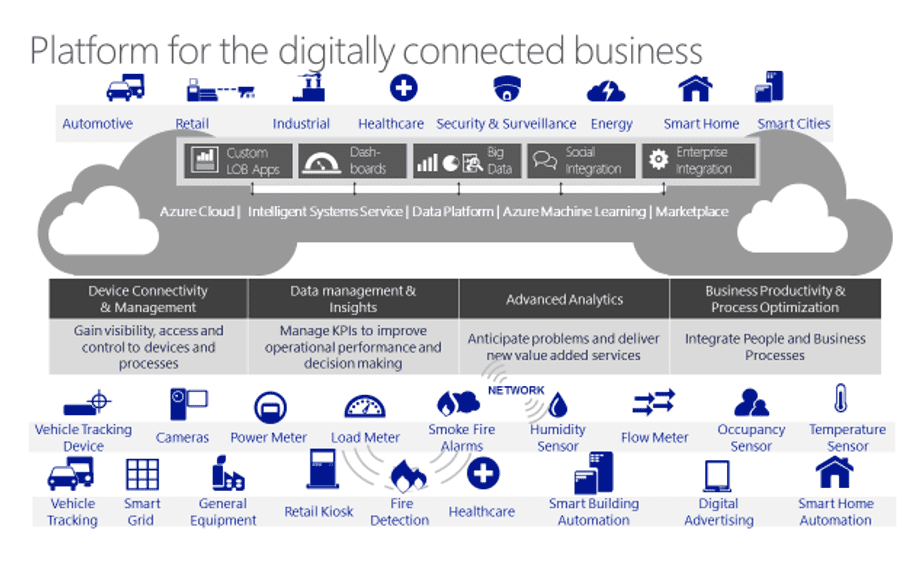The auto industry’s secret weapon to next generation customer service: the connected ecosystem
 As businesses work to keep pace with the rapidly changing needs and expectations of consumers, many are calling the customer experience the next competitive battleground. This certainly rings true in the automotive industry. For global automakers and dealers to compete in today’s digital world, they need to provide experiences that differentiate from the competition—experiences that are personal, relevant and timely.
As businesses work to keep pace with the rapidly changing needs and expectations of consumers, many are calling the customer experience the next competitive battleground. This certainly rings true in the automotive industry. For global automakers and dealers to compete in today’s digital world, they need to provide experiences that differentiate from the competition—experiences that are personal, relevant and timely.
Delivering differentiated customer experiences
Through the Internet of Things (IoT) and the advancements in connectivity, sensors, devices and data analytics, automakers can transform both the way they engage with consumers and how their value chain performs, both critical components to delivering the next generation of connected consumer experiences.
One of the biggest opportunities to offer differentiated experiences is through the vehicle itself. Given the connectivity and intelligence now available, the potential is here to deliver value-added in-car services that seamlessly integrate with the customer’s daily life and work, take advantage of the consumer’s own devices, and build personalized experiences that drive loyalty, new sources of revenue and excitement.
The secret to achieving that is to go beyond the boundaries of the current automotive value chain and create a connected ecosystem of third-party services across industries.
Next gen opportunity: the connected ecosystem
One of the biggest opportunities for transformation lies in going beyond the automotive value chain. In many ways, the boundaries with other industries are already starting to intersect and blur, with the automobile being absorbed into their ecosystems. For example, the energy value chain is being impacted with the growing number of electric vehicles, public services are getting digitized for services such as parking availability and car sharing (see how cities like Paris and Helsinki are modernizing transportation systems), and insurance companies are focusing on accident prevention instead of compensation.
By proactively integrating outside its current boundaries, and taking advantage of the digital transformation happening in other industries, automakers can invent new business models and offer the next gen of value-added services that go above and beyond current customer service capabilities.
Through a digitally-connected ecosystem—and that could include a vast range of industries including retail, financial services, healthcare, energy and more—the car owner could receive road condition warnings for icy roads or automatic tolling, help with finding a parking spot, and lower car insurance premiums through driver behavior monitoring and pay-as-you-drive policies. The driver could also receive offers based on context and personal preferences: is there a traffic jam ahead and could they use a break at the nearest Starbucks?
The automotive leaders that achieve and tap into this connected ecosystem stand to be clear winners in the customer experience battle. So, how do automakers make this happen?
The platform for the digitally connected business
IoT capabilities are being enabled and powered by the platform for the digitally connected business through pervasive connectivity, cloud-based services of immense scale and data insights with advanced analytics such as machine learning.
This diagram depicts the IoT journey being adopted by a range of participants in a variety of value chains, including automotive, as devices become smarter and more connected, generate streams of data that can be subject to continuous analysis, and new analytic tools such as machine learning reason over the data and provide intelligent recommendations that eventually augment human workers and transform business processes.
As part of its core focus on a mobile-first, cloud-first world, Microsoft is vested in providing the devices, productivity and end-to-end platform capabilities that deliver the most comprehensive IoT platform available today. We are focused on both a powerful platform across a range of devices, and a rich set of globally available cloud services through Microsoft Azure to deliver great technologies of their choice to developers, partners and customers.
Microsoft’s hyper-scale, enterprise-ready cloud platform and extensive ecosystem enable it to serve as a trusted partner for customers to develop cross-cutting services within and across a range of industries centered on leveraging their own data and the advanced services and capabilities available in the Azure cloud.
Top automakers today are leveraging these innovations and capabilities to transform, compete and win as the industry shifts its focus to the customer experience. In the next entry, I’ll focus on common IoT architectural patterns and cloud services enabling this transformation.




